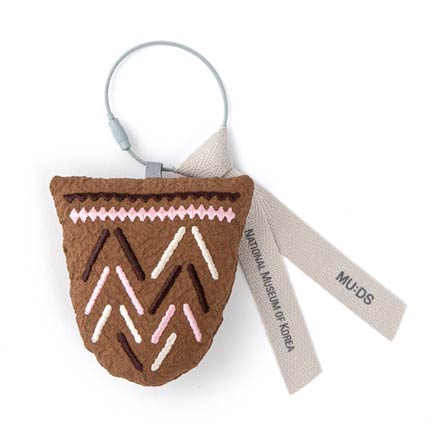
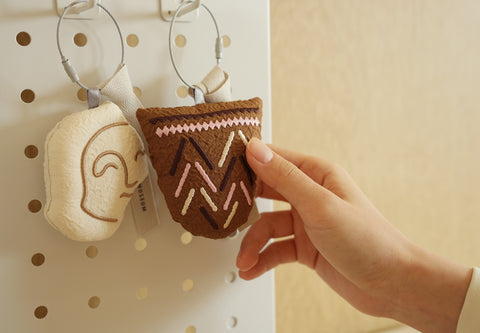
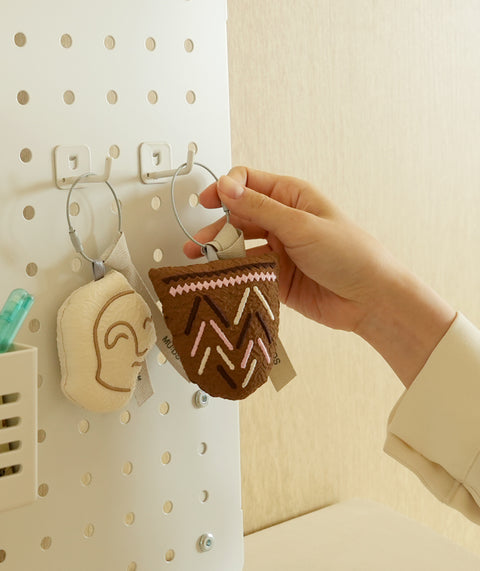
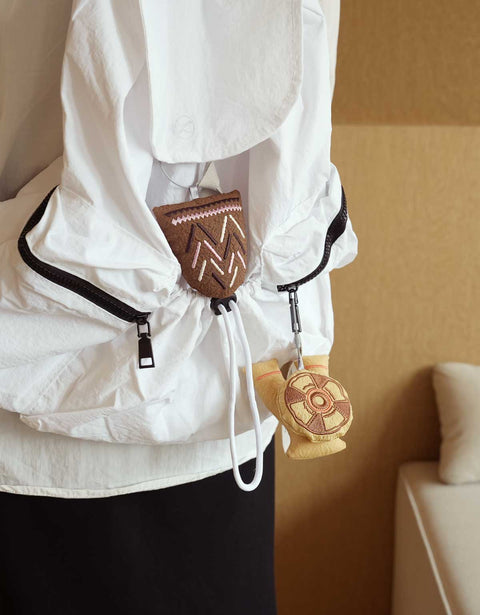
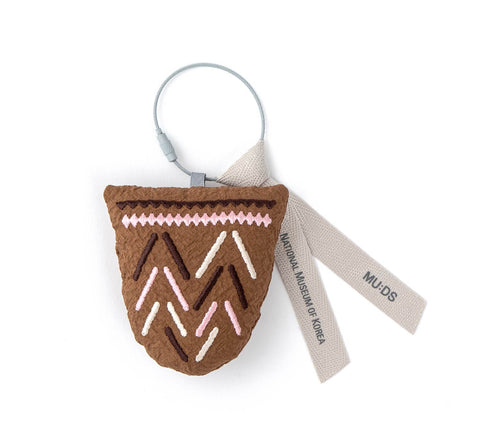

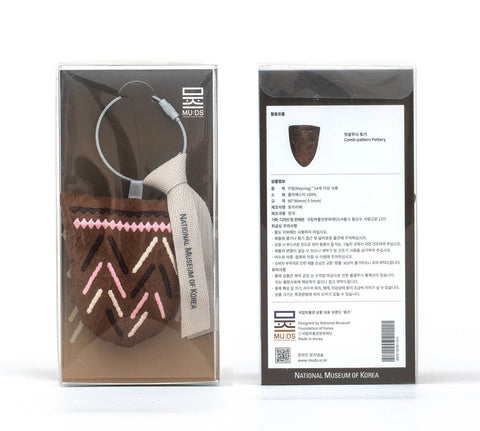
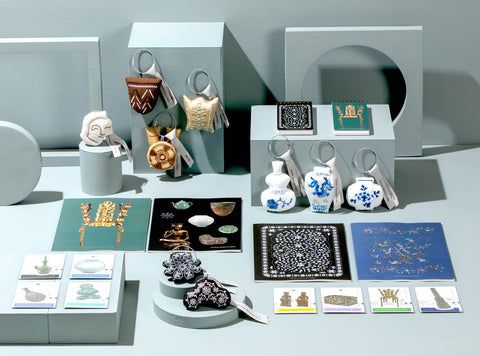
Keyring (Comb-pattern Pottery)
Keyrings in the Form of Items from the Collection of the National Museum of Korea
(Comb-pattern Pottery)
Product : 80X90mm
Package : 85x170x30mm
Weight : 60g(70g)
Concept
A range of practical stationery and lifestyle products has been designed with the aim of bringing the beauty of items from the collections of the national museums into everyday life. This new range of museum souvenirs is presented in the hope that visitors can fondly remember their experience at the museum as a place where history and culture come alive. With these souvenirs featuring a variety of items from the museums’ collections, you are invited to relive your visits and cherish the memories for a long time
Features
This keyring replicates the shape of a designated artifact and is complemented by detailed embroidery. It is designed to bring museum artifacts into everyday life in a familiar and enjoyable way.
Decorate your personal items like bags or pouches with this keyring and enjoy it in a fun and unique manner.
Notes
-This product is recommended for use by individuals aged 14 and above.
-Do not use for purposes other than those intended.
-There may be irregular seams since the finishing process is done by hand. Please note that this is not considered a defect.
-Due to the nature of stitching, there may be slight differences in size, embroidery placement, shape, and finishing quality.
Handling Guidelines
-Do not use for purposes other than those intended.
-Keep the product away from heat, flames, and sharp objects.
-If dirty, wipe gently with a soft cloth and allow it to air dry in a well-ventilated, shaded area.
-Avoid using washing machines or dryers, as they may cause deformation.
-Be cautious of color transfer when in contact with dark-colored clothing or accessories.
Relic
Pottery, one of humanity’s first inventions, is made by combining earth, water, and fire. Before the invention of pottery, food was stored and transported in containers made from wood, reeds, leather, and other organic materials. The invention of pottery made it much easier to store food, but also enabled people to cook their food, which dramatically increased the number and the diversity of things that people could eat. Some of the oldest pottery found in the Korean Peninsula is raised-design pottery (deonmunui togi), which first appeared around 6000 BCE. Approximately 1000 years later, that style was replaced by comb-pattern pottery (bitsalmunui togi), which began in the midwestern region of the Korean Peninsula before quickly spreading to the rest of the peninsula. This particular example of comb-pattern pottery was excavated from the prehistoric settlement site of Amsa-dong, Seoul. It is a simple “V” shaped vessel, with a wide mouth and narrow base, and the entire surface is decorated with engraved lines and dots forming geometric patterns. Experts believe that the designs were made to express the worldview of the Neolithic people who interacted with the natural environment of the Korean Peninsula. Both the form and the decorative motifs that characterize this type of pottery are unique to Korea, and have rarely been found outside of the peninsula. Hence, Korean Neolithic culture is often referred to as the “Comb-pattern Pottery Culture.” The use of comb-pattern pottery, which was so distinctive of the local cultures of ancient Korea, began to dwindle by about 1000 BCE. Ultimately, this type of Neolithic pottery was assimilated with and replaced by the plain, undecorated pottery (minmunui togi) representative of the Korean Bronze Age, which was based on farming.

